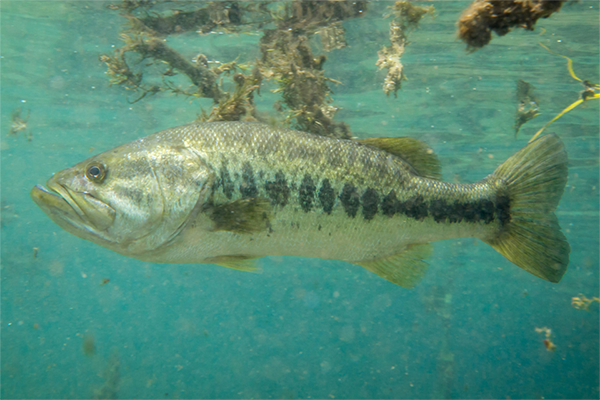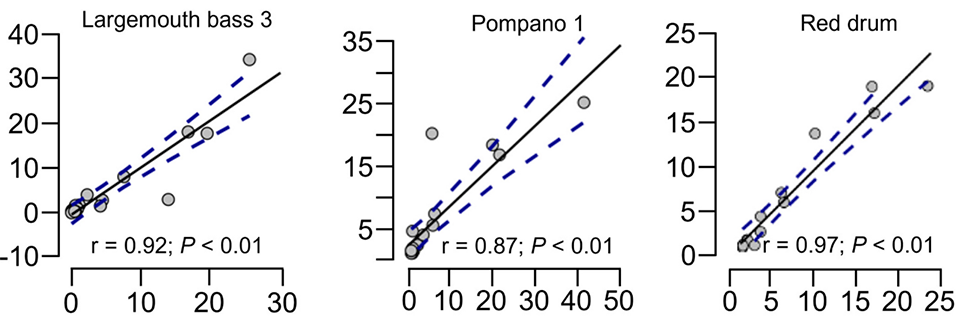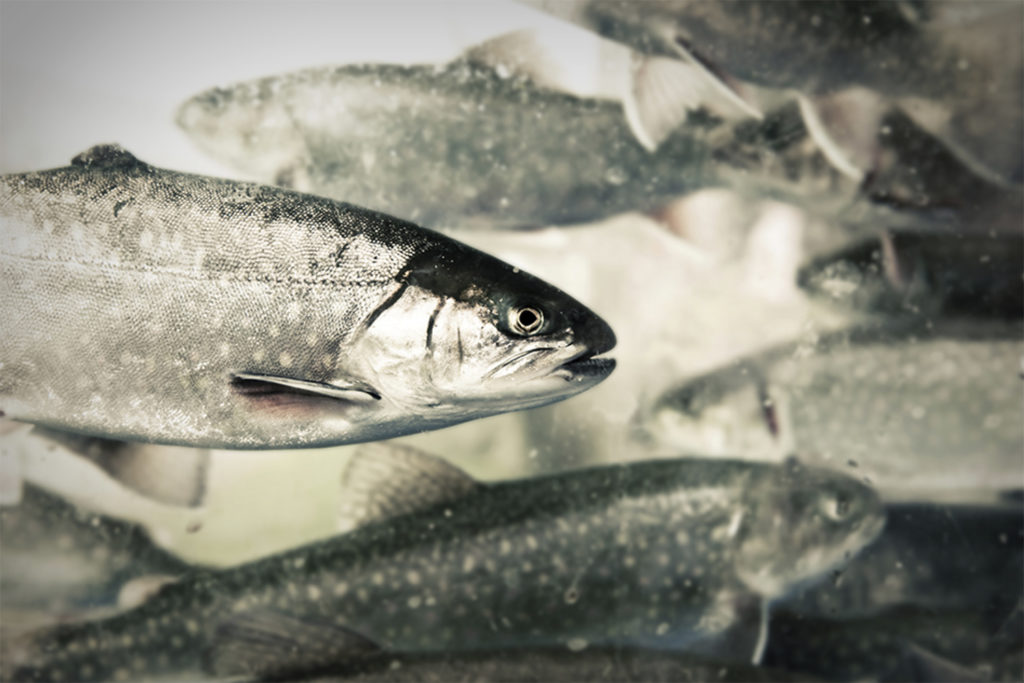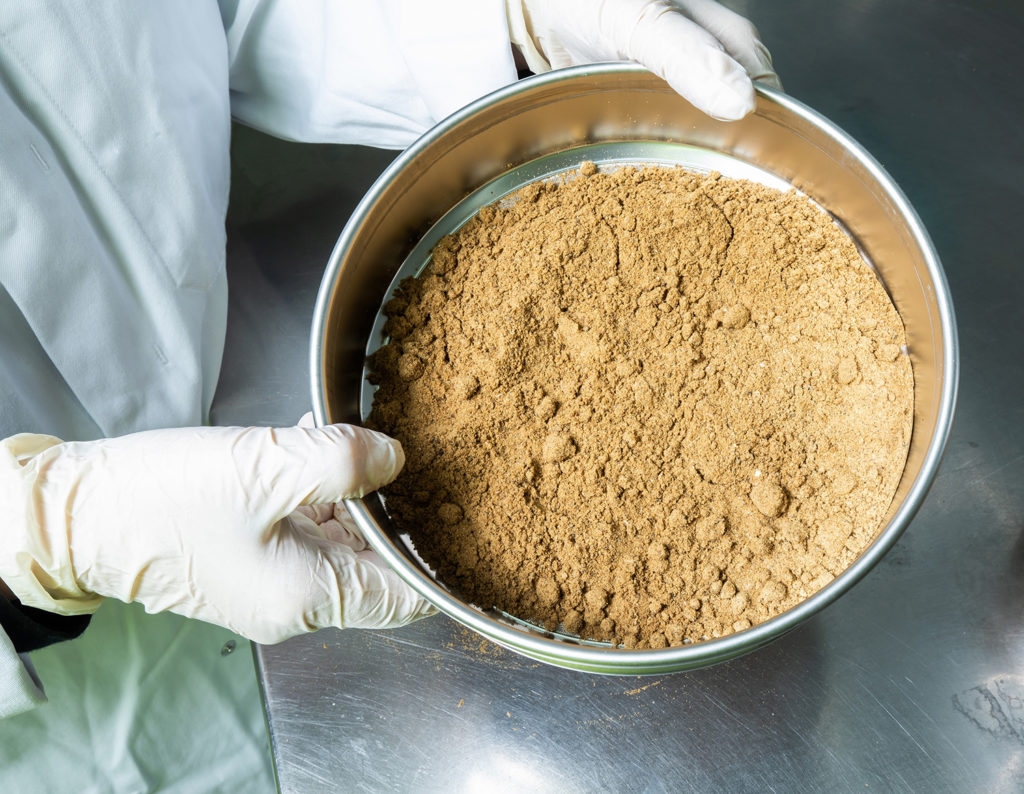A documentation of the responses of five commercial fish species to aquafeeds containing traditional fishmeal and fish oil alternatives as well as innovative ingredients

Since 2014, the F3 Feed Innovation Network has encouraged sustainable initiatives to reduce the dependence of the aquafeed industry on forage fishes and embolden the sector to adopt novel and promising ingredients and formulations. One way in which the F3 consortium accomplishes this is through openly sharing recipes and experimental findings through its website and publications.
Aquafeeds do not have a requirement for any specific ingredient but must satisfy the nutritional prerequisites of the target animal. Feeds, therefore, must provide a combination of nutrients in the correct proportions to fulfill the metabolic needs of the species in question. Bearing this in mind, the F3 consortium has completed several trials in efforts to eliminate fishmeal and fish oil from the feeds of a variety of widely cultivated and candidate species.
This article – summarized from the original publication (Campbell, K.B. et al. 2022. In Pursuit of Fish-Free Feeds: A Multi-Species Evaluation. Fishes 2022, 7(6), 336) – reports the findings of eight of these trials. The formulations considered herein for each species studied are all open-source and freely available on the F3 website. All F3 diets may be re-tailored to suit the user’s demands; other tested formulations are similarly deposited on the F3 website.
Species evaluated
Five well-established and candidate cultured species of teleost were examined for their sensitivity to fish-free feeds (F3). They included the largemouth bass (Micropterus salmoides), which is the preeminent farmed Perciformes, representing over 50 percent or around 432,000 tons of total production. Also, the Florida pompano (Trachinotus carolinus), a strong candidate species for U.S. aquaculture, and other members of the family Carangidae, including two species of amberjack, namely the California yellowtail (Seriola dorsalis) and kampachi (S. rivoliana). More than 170,000 tons of pompano is cultured annually, with most production being in Asia, while 150,000 tons of amberjack is farmed globally, with most production being dependent on raw fish, although the availability of formulated diets has recently increased.
As a major portion of compounded feeds used in Chinese mariculture is taken by farmers of pompano and red drum (Sciaenops ocellatus), the latter species was also evaluated. Global production of Sciaenids exceeds 340,000 tons, with the red drum representing around 25 percent of the total. As adults, the species evaluated herein are considered as obligate carnivores. For many marine carnivores, only a few studies have investigated the potential for concurrently replacing fishmeal and fish oil in diets.
Observations and discussion
Weight gain in all marine species fed F3 diets, except pompano 2, was less than that achieved by animals fed conventional fishmeal and fish oil feeds (Table 1). However, there was no impact discerned on FCR, survival, fillet yield, HSI, or K. In kampachi, a significantly higher VSI in the control group accounted for the increased weight gain such that once this was taken into account, no differences in weight were apparent. In largemouth bass, the only freshwater species examined, the weight gain in fish fed F3 and F2 (fish oil included) was equivalent to that in animals fed the conventional diet.
McLean, Fish-free feeds, Table 1a
| Ingredient | Kampachi | Yellowtail | Largemouth Bass 1 | Largemouth Bass 2 | Largemouth Bass 3 | Red Drum | Pompano 1 | Pompano 2 |
|---|
Ingredient | Kampachi | Yellowtail | Largemouth Bass 1 | Largemouth Bass 2 | Largemouth Bass 3 | Red Drum | Pompano 1 | Pompano 2 |
|---|---|---|---|---|---|---|---|---|
| Wt gain (%) | 419↓ | 633.6↓ | 201.4 | 149.3 | 398 | 666↓ | 243.1↓ | 1149 |
| FE | - | - | - | - | - | 1.09 | 0.52 | - |
| FCR | 1.31 | 1.33 | 1.28 | 1.95↑ | 0.89 | - | - | 1.6 |
| PER | - | - | - | - | 2.34 | - | - | 1.2↓ |
| Survival (%) | - | 100 | 99 | 84↓ | 100 | 90 | - | 100 |
| Fillet yield (%) | 60.9 | - | - | - | 32.3 | 31.5 | 31.2 | - |
| HSI (%) | - | - | 1.49 | 1.66 | 3 | 1.99 | 2.6 | - |
| IPF ratio (%) | - | - | - | - | 3 | 0.39↓ | 0.01 | - |
| K factor | - | - | 1.16 | 1.19 | 1.29 | 1.34 | 1.59 | |
| VSI (%) | 5.7↓ | - | 4.55 | 1.93 | - | - | - | - |
| Ingredient | Kampachi | Yellowtail | Largemouth Bass 1 | Largemouth Bass 2 | Largemouth Bass 3 | Red Drum | Pompano 1 | Pompano 2 |
|---|
Ingredient | Kampachi | Yellowtail | Largemouth Bass 1 | Largemouth Bass 2 | Largemouth Bass 3 | Red Drum | Pompano 1 | Pompano 2 |
|---|---|---|---|---|---|---|---|---|
| Moisture | - | 70.9 | - | - | 68.8 | 74.9 | 68.6 | - |
| Protein | - | 20.98 | 45.4 | 41.5 | 17.9 | 17.4 | 18.1 | - |
| Lipid | - | 7.37↓ | 14.7 | 15 | 8.8 | 3.87↓ | 9.72 | - |
| Ash | - | 2.46↑ | 6.96 | 7.39 | 4.0↓ | 3.9 | 3.29 | - |
The FCR in F3/F2-fed largemouth bass was equivalent to that in the conventional group in two of the three trials and was elevated in one of the trials, while survival was lower in one study. Accordingly, the trials described here illustrate the potential to severely reduce, and perhaps eliminate, fishmeal and fish oil from aquafeeds of facultative carnivores. Importantly, the evidence presented to support this statement originated from investigations that employed a constrained list of possible fishmeal and fish oil alternatives. Additionally, the F3 recipes used were derived from a formulator’s experience rather than from experiments designed to determine the optimal inclusion rates for specific ingredients.
Undoubtedly, with dietary refinement, perhaps involving the inclusion of other proteins and oils or modification to their concentrations/combinations, even greater benefits than those achieved will accrue. This supposition is supported by the findings of other researchers who have successfully replaced fishmeal and fish oil in diets for an ever-increasing number of species.
The results considered here with the F3 feeds, together with the experience of others, imply that marine species will be more demanding than freshwater fishes regarding the complete removal of dietary fishmeal and fish oil. It is probable that the largemouth bass were indifferent to lipid exchange due to their essential fatty acid (EFA) requirements being met through their diet. Similar observations have been made with other species of freshwater fish, where a wide variety of alternative dietary lipids have been shown to facilitate growth. These results thus provide support for the idea that fish oil can already be totally removed from largemouth bass diets.
As recorded previously for a wide variety of species, the fatty acid profiles of fillets of the assessed fish correlated well with those of their feeds (Fig. 1). One negative aspect of this trait, however, was that while omega-6:omega-3 ratios remained stable, the EPA/DHA fractions were inferior to those of control fillets. Fish oil substitution, therefore, may negatively affect the nutritional value of fillets.

Were it to be considered necessary, fillet lipids (types and levels) might be tailored to a specific use with finishing diets. Such an eventuality might occur where significant changes in flesh quality, including firmness, juiciness and fresh oily taste, deviate following large fluctuations in proximate composition, or, for example, when higher fillet lipid levels are required for reasons of processing, such as smoking. For largemouth bass, the deletion of fish oil from their diet had no apparent impact on consumer acceptance. Similarly, a blind taste test of kampachi resulted in 62 percent of participants preferring the F3-fed fish, 19 percent having a preference for S. rivoliana fed on a traditional diet, and 19 percent being unable to discriminate between the two dietary groups.
Although the main goal of the F3 initiative is to eliminate the use of forage fishes in aquafeed production, an aspiration that is close to attainment for the species evaluated, some still question the practice of using animal byproducts as alternative proteins. While this may be achievable with lower trophic species, a consistent observation with carnivores has been poorer overall performance when diets comprise vegetable proteins only.
This is undoubtedly related to the presence of poorly digested carbohydrates and imbalances in essential amino acids (EAAs), the presence of a wide variety of anti-nutritional factors, and structural differences between plant and animal proteins. These have negative impacts on growth, feed efficiency, metabolism and health, and it is feasible that these effects may partly account for the reduced growth observed in the described trials herein.
However, even given the presence of poultry byproduct meal (PBM) in all F3 feeds, the marine test species failed to attain the growth recorded by control groups. Due to the variety of generally unsegregated material that is employed in PBM production, together with differences in processing and equipment, meals vary widely in their protein content and nutritional quality, lacking certain EAAs, being high in ash and expressing variable digestibility. Nonetheless, PBM has been successfully employed to replace relatively high levels of fishmeal, although growth penalties coupled with higher FCRs and changes in body composition are known to occur in various species, and this may have been witnessed here.
The new and emerging technologies that modify raw materials, together with advances in process engineering, are starting to overcome many of the constraints encountered with alternative vegetable proteins, which bodes well for the future. For example, the production of plant protein concentrates and isolates removes carbohydrates, fiber and anti-nutritional factors, resulting in products that, while more expensive, generally express an augmented EAA balance and have enhanced digestibility. However, the use of plant proteins for aquafeeds is disapproved by some who raise concerns relating to forest transitions, displacement of land use, increased use of fertilizers, eutrophication, environmental degradation, carbon footprinting and others.
Given the current production strategies of established and emergent alternative proteins and their projected growth potential, it has been suggested that no single substitute protein will be able to source future demands of the animal feed industry, just as reliance on a few sources of ingredients, namely fishmeal and fish oil, has created the bottlenecks we see today. Accordingly, the availability of a broad range of replacement proteins represents the soundest approach to overcoming future supply constraints. Indeed, today, feed formulation scientists have a wide assortment of fishmeal and fish oil alternatives. Nevertheless, the aquafeed sector retains a significant dependency on marine products, and it is likely that this addiction will remain for some time. Although their use will probably continue to decline in grower feeds, fishmeal and fish oil will remain significant ingredients in specialty feeds, as exemplified by broodstock diets, and, perhaps, finishing feeds that may overcome fillet quality issues.
To date, most successful fishmeal and fish oil replacement trials with carnivores have used diets containing blends of proteins and/or lipids that have been formulated to meet the nutrient requirements of the target species. The broad range of potential aquafeed ingredients currently available, however, while providing strategic opportunities for formulating fishmeal- and fish oil-free feeds, also brings headaches for predicting optimal nutritional and economic blends, especially when mixtures might include a range of functional ingredients. Methods for overcoming some of these complexities are considered elsewhere.
One aspect of feed blending that has received limited attention is the potential to impact gut flora and fauna colonization and how this may influence nutrient absorption, etc., leading to the potential for gut dysfunction. Clearly, there must be no consequences to the health of the target species when using alternative dietary ingredients. In one study with largemouth bass, however, survival was apparently compromised by F3 feeds, although in a further two studies, no such effect was observed. Nonetheless, the detected anomaly prompted more detailed analyses of fish health.
Since it is likely that animals cultured using sustainable marine-resource-free diets, such as organically certified and other premium foods, will represent quality products, methods for verifying their authenticity and traceability will become imperative. The delta-N-15 (δ15N) of animal tissue is commonly employed to designate trophic position in food, and the technique has been applied to examine the relative contributions of plant and animal proteins in feeds for crustaceans and fishes. Thus, when the contribution of dietary fishmeal declines, a corresponding decline in δ15N is encountered. This response thereby potentially provides a method for verifying the integrity of animals reared using F3 diets.
Perspectives
Based on the findings presented using essentially carnivorous species of cultured fish, total replacement of fishmeal and fish oil appears more than just a convincing and economically viable proposition. Even so, further production-length research, perhaps with adjusted dietary formulae, is warranted to ensure that such diets have no negative consequences to the overall health and welfare of farmed animals.
The potential adverse outcomes that dietary changes may have on various quality attributes, which may influence wholesale, retail, and consumer purchasing choices, also demand greater attention. Lucid though, from the considered trials, is that replacement protein/oil combinations provide products that are more secure in terms of food safety and more acceptable to discriminating consumers. The use of such nutrients will bridge gaps between the future supply and demand for fishmeal and fish oil while serving global sustainability initiatives.
While this might appear an over-enthusiastic conclusion, we have already demonstrated the potential for aquafeed mindset change with Pacific whiteleg shrimp (Litopenaeus vannamei) production, where F3 feeds are now firmly placed in the production sector. Similar success has been achieved with trout, largemouth bass, yellow croaker and red sea bream.
Now that you've reached the end of the article ...
… please consider supporting GSA’s mission to advance responsible seafood practices through education, advocacy and third-party assurances. The Advocate aims to document the evolution of responsible seafood practices and share the expansive knowledge of our vast network of contributors.
By becoming a Global Seafood Alliance member, you’re ensuring that all of the pre-competitive work we do through member benefits, resources and events can continue. Individual membership costs just $50 a year.
Not a GSA member? Join us.
Authors
-
Kelly B. Campbell, M.S.
Anthropocene Institute, Palo Alto, CA 94303 USA
-
Ewen McLean, Ph.D.
Corresponding author
Aqua Cognoscenti LLC, West Columbia, SC 29170 USA -
Frederic T. Barrows, Ph.D.
Aquatic Feed Technologies LLC, Bozeman, MT 59718 USA
Tagged With
Related Posts

Aquafeeds
Aquafeed moonshots at the F3 ‘talent show’
At the F3 (fish-free feed) Companies Got Talent event in Burlingame, Calif., last week, alternative (non-marine) aquafeed ingredient companies spoke of decoupling aquaculture from fishmeal and fish oil in their quest for greater sustainability.

Innovation & Investment
Aquafeed ingredient AlgaPrime wins GAA Innovation Award
A proliferation of alternative feed ingredients has allowed aquaculture to extend the natural resources it depends on. AlgaPrime, packed with the long-chain omega-3 fatty acid DHA, is being recognized as a game-changing innovation for aquaculture feeds.

Aquafeeds
Point: There are no essential ingredients in aquaculture feeds
Kevin Fitzsimmons, leader of the F3 (fish-free feed) Challenge, says aquaculture may currently depend on fishmeal and fish oil, but farmed fish do not.

Aquafeeds
Counterpoint: Marine ingredients are stable in volume, strategic in aquaculture nutrition
IFFO Director General Petter M. Johannessen says fishmeal and fish oil offer unmatched nutrition and benefits to fuel aquaculture’s growth trajectory.



